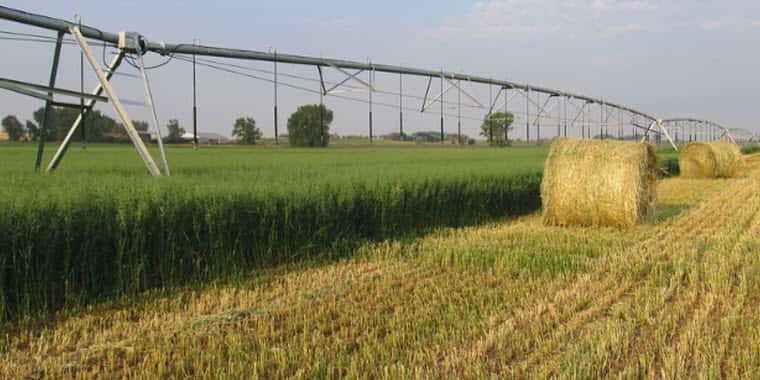USDA today announced plans to invest more than $4 billion to strengthen critical supply chains, including animal production and meat processing, through the Biden Administration’s Build Back Better initiative.
The USDA announcement comes as the White House released a 100-day examination of supply chains across key parts of the country’s economy. The White House sees the focus on supply chain resilience as a way to “reimagine and rebuild a new American economy, not go back to the way things used to be.” The report highlights the president’s focus to pass a large, encompassing infrastructure bill to help position infrastructure to help U.S. companies compete globally.
Ag Secretary Tom Vilsack was also named co-chair of the Administration’s new Supply Chain Disruptions Task Force. The Task Force will provide a whole of government response to address near-term supply chain challenges to the economic recovery. The Task Force will convene stakeholders to diagnose problems and surface solutions—large and small, public or private—that could help alleviate bottlenecks and supply constraints related to the economy’s reopening after the Administration’s historic vaccination and economic relief efforts.
USDA stated it will use its supply-chain spending to “increase transparency and competition” in the livestock markets and the meat processing sector that “have resulted in thinly-traded markets and unfair treatment of some farmers, ranchers and small processors.” Certain investments from USDA through grants, loans and loan guarantees “will specifically address the shortage of small meat processing facilities across the country” as well as focus more attention on local and regional food systems to support them, USDA stated.
“The COVID-19 pandemic led to massive disruption for growers and food workers. It exposed a food system that was rigid, consolidated, and fragile. Meanwhile, those growing, processing and preparing our food are earning less each year in a system that rewards size over all else,” said Vilsack.
“The Build Back Better initiative will make meaningful investments to build a food system that is more resilient against shocks, delivers greater value to growers and workers, and offers consumers an affordable selection of healthy food produced and sourced locally and regionally by farmers and processors from diverse backgrounds. I am confident USDA’s investments will spur billions more in leveraged funding from the private sector and others as this initiative gains traction across the country. I look forward to getting to work as co-chair of the new Supply Chain Disruptions Task Force and help to mobilize a whole-of-government effort to address the short-term supply challenges our country faces as it recovers.”
Funding announcements under the Build Back Better initiative will include a mix of grants, loans, and innovative financing mechanisms for the following priorities, each of which includes mechanisms to tackle the climate crisis and help communities that have been left behind, including:
- Food Production: Food production relies on growers, including farmers and ranchers, workers, and critical inputs. But a diminishing share of the food dollar goes to these essential workers. USDA will invest in the current and future generation of food producers and workers throughout the food system with direct assistance, grants, training and technical assistance, and more.
- Food Processing: The pandemic highlighted challenges with consolidated processing capacity. It created supply bottlenecks, which led to a drop in effective plant and slaughter capacity. Small and midsize farmers often struggled to compete for processing access. USDA will make investments to support new and expanded regional processing capacity.
- Food Distribution & Aggregation: Food aggregation and distribution relies on people working together throughout the food system and having the right infrastructure to gather, move and hold the food where and when it is needed. This system was stressed during the pandemic due to long shipping distances and lack of investment in local and regional capacity. USDA will make investments in food system infrastructure that can remain resilient, flexible and responsive.
- Markets & Consumers: The U.S. spends more on health care and less on food than any other high-income nation; yet the U.S. has higher rates of diet-related illness and a lower life expectancy than those nations. At the same time, many socially disadvantaged and small and mid-sized producers do not have equitable access to markets. USDA will support new and expanded access to markets for a diversity of growers while helping eaters access healthy foods.
Ag Secretary Vilsack added the goal of the supply chain investment will be to help the food system better absorb market shocks and provide more value to both farmers and workers, with more attention on sourcing food grown and processed more locally and regionally. Details were thin on just how this will be accomplished with USDA’s programs.
###
USDA/DTN


